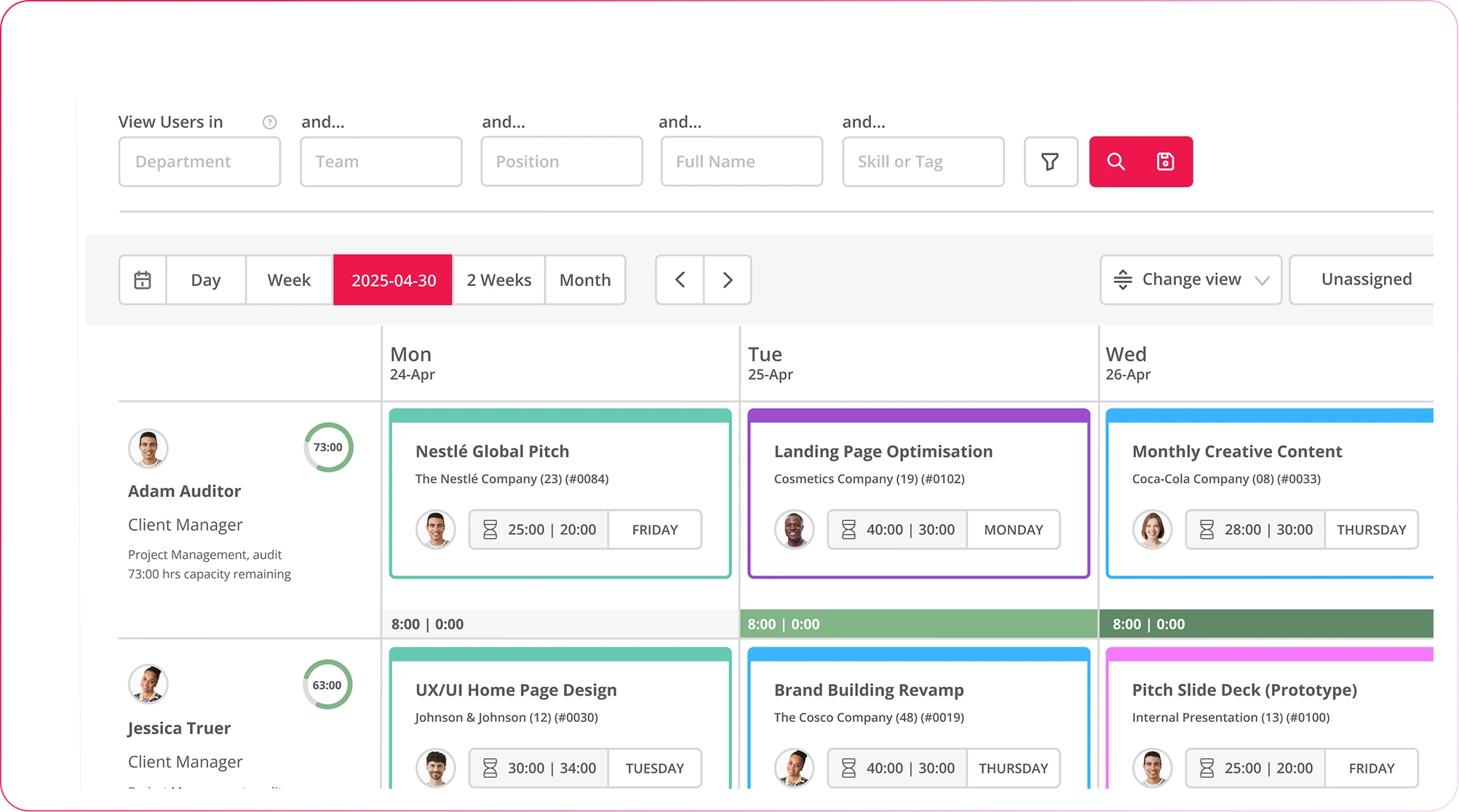Table of contents
Subscribe to our newsletter
Thank you! Your submission has been received!
Oops! Something went wrong while submitting the form.


Engineers are an extremely thorough bunch – the phrase over-engineering had to come from somewhere. But it’s that very quality that makes them good at their jobs, and it’s the same reason it's such a lucrative business to be in.
However, if it’s not properly tracked and billed, it might not be as lucrative as it could be.
Deadlines are tight and projects can get complex, so having a clear picture of what's going on is a must. That's where real-time project tracking comes in. It's like having a crystal ball that shows you exactly how your project is progressing, from start to finish.
In this article, we'll dive into why real-time tracking is a game-changer for engineers. We'll talk about the benefits, how to do it right, and maybe we’ll even talk about some software that can help!
Ready? Let’s jump in.

What is it?
Real-time project tracking is a dynamic approach to monitoring and managing projects that provides up-to-date information on progress, resource allocation, and potential issues. Unlike traditional methods, which often rely on manual updates and periodic reviews, real-time tracking leverages software and tech tools to deliver instant insights.
Key components of real-time tracking include:
Software tools: Specialised software applications designed to capture, process, and visualise project data.
Data integration: Connecting various data sources (like project management tools and time tracking systems) to create a unified view of project activities.
Real-time project tracking software offers a range of features essential for effective engineering project management:
One can see why this might be a good idea, especially in engineering, but let’s take a closer look at the benefits of real-time project tracking.
Real-time project tracking provides a comprehensive view of project status, offering stakeholders and team members a clear understanding of progress, challenges, and opportunities. This transparency is essential for effective collaboration and decision-making.
Examples of visibility improvements in engineering projects:
Real-time data empowers engineers to make informed decisions and respond quickly to changing circumstances. By having access to the latest project information, decision-makers can identify potential issues early and take corrective actions before they escalate.
Examples where real-time tracking can lead to better decisions:
Real-time project tracking streamlines workflows and reduces redundancies, leading to increased efficiency and productivity. By providing a clear picture of project status and resource allocation, engineers can optimise their efforts and minimise wasted time.
Real-time tracking helps monitor expenses and prevent budget overruns by providing a clear view of project costs in real-time. By identifying potential cost overruns early, engineers can take proactive measures to control expenses and stay within budget.
Seamless communication is essential for the success of engineering projects. Real-time project tracking facilitates better teamwork and information sharing by providing a centralised platform for collaboration.
Tools and features that support collaboration within tracking software:
All of these benefits (and more) can be realised with Magnetic’s all-in-one business management software.
Here are some of the more common challenges an engineering firm can face, and how real-time tracking would solve them
One of the key benefits of real-time project tracking is its ability to help identify and address bottlenecks in engineering projects. Bottlenecks can arise due to various factors, such as resource constraints, process inefficiencies, or unexpected challenges. Common bottlenecks in engineering projects include:
Real-time tracking provides the visibility needed to identify these bottlenecks and take corrective actions. By monitoring project data in real-time, engineers can detect when resources are becoming strained or processes are not functioning as expected. This enables them to make timely adjustments and prevent further delays.
Accurate data is essential for effective project tracking. Inaccurate or incomplete data can lead to misleading insights and poor decision-making. Therefore, it is crucial to implement measures to ensure data accuracy and reliability in real-time tracking systems.
Integrating project tracking software with other engineering tools can enhance its functionality and provide a more comprehensive view of project activities. However, this integration can pose challenges due to differences in data formats, workflows, and system compatibility.
Magnetic is particularly good for engineering firms as it helps simplify complex projects, manage resources and track budgets. It also has many features that can help with real-time project tracking.
Engineering projects are rarely linear. With Magnetic, every task, milestone and dependency sits in one centralised view. Live dashboards show exactly where each project stands, so you can catch bottlenecks before they cause delays.
Overloaded engineers or idle resources cost time and money. Magnetic's real-time capacity planning highlights were workloads are uneven, helping you redistribute tasks and keep teams operating at peak efficiency.
Tracking hours manually makes it easy to miss where projects are bleeding time. Magnetic ties timesheets directly into project budgets, giving you instant visibility into billable hours, costs and variances. That means no surprises when invoicing clients or reviewing margins.
Wether its a structural engineer waiting on designs, or a consultant sharing updates with a client, Magnetic makes communication transparent. Shared dashboards and task tracking keep everyone aligned, reducing rework and miscommunication.

It may see like a lot to consider, but don't worry- we've got you covered. Here are some steps, tips, and best practices for implementing real-time project tracking in your engineering firm.
Common pitfalls to avoid and how to address them
Anyone who has not used real-time tracking before will already be blown away by how useful it is. But guess what? It’s going to get even better. Emerging technologies are paving the way for a new era of real-time project tracking in engineering, and these are some of the trends we’ve seen emerging:
As these technologies continue to evolve, real-time project tracking will become even more indispensable for engineering firms. It's a future where projects are not just managed, but optimised and transformed.
As you can see, real-time tracking unlocks a host of benefits for engineering firms, like enhanced visibility, improved decision-making, increased efficiency, reduced costs, and enhanced collaboration.
Magnetic's all-in-one solution tackles these challenges and empowers engineering firms to simplify complex projects, manage resources effectively, and track budgets with precision. The project management, resource management, and timesheet features are specifically designed to enhance real-time tracking capabilities.
Ready to experience the power of real-time project tracking? Schedule a demo with Magnetic today and see how it can transform your engineering projects.
Real-time project tracking continuously updates progress, costs, risks and resource usage from connected tools into live dashboards. Unlike weekly spreadsheets it surfaces issues immediately so you can act before delays or overruns compound.
.svg)
Engineering projects are complex, interdependent and deadline driven. Live visibility helps you spot bottlenecks, rebalance resources, protect critical paths and keep quality high without waiting for a status meeting to reveal a problem that started days ago.
.svg)
Start with: schedule variance vs. milestones, burn rate vs. budget, hours vs. estimates (by role/task), resource capacity/utilisation, change requests, defect/rework queues, and risk flags. Tie each metric to an owner and an "if-this-then-that" action.
.svg)
Run a 4-step pilot: (1) pick one project and define 6-8 must have metrics, (2) integrate time, task and cost data, (3) build a single dashboard with clear thresholds, (4) coach teams to make decisions in the dashboard (not in mail_
.svg)
Make data entries effortless (log time where the work happens), automate syncs, enforce simple validation rules and audit weekly. Close the loop by showing teams how their inputs drive decisions (reallocations, approvals, risk removals) - engagement follows visible impact.
.svg)
Magnetic unifies project plans, timesheets, costs, and resources into live dashboards. You get: Instance variance alerts, capacity and utilisation views, task-level time tracking, automated cost/estimate comparisons, collaborative comments and integrations (e.g. Xero, Sage) so financials and delivery stay in lockstep.